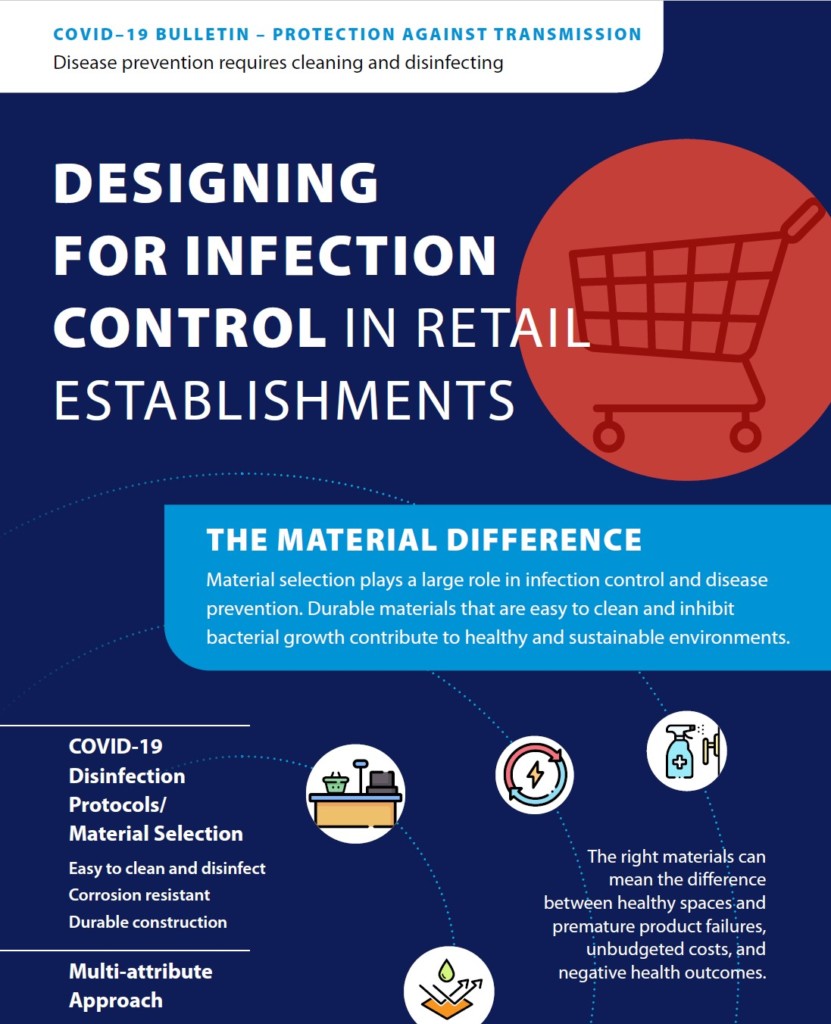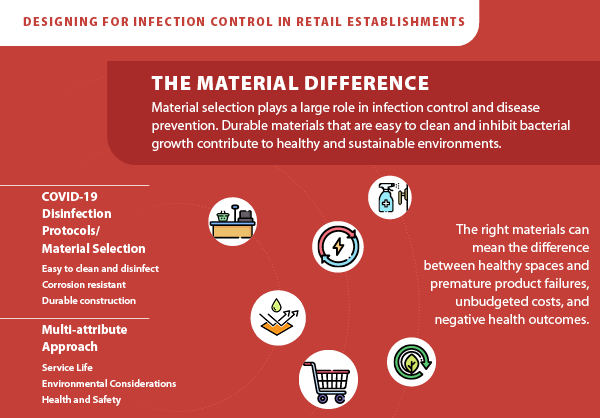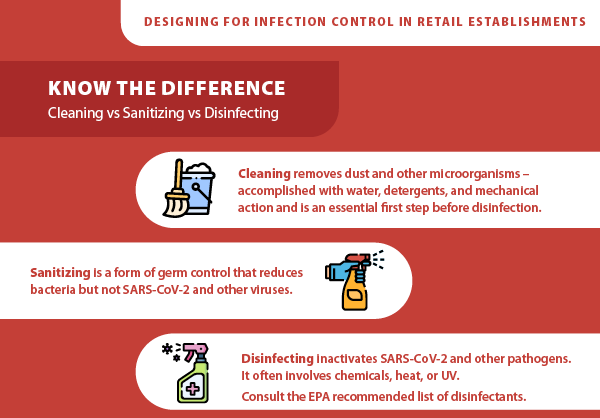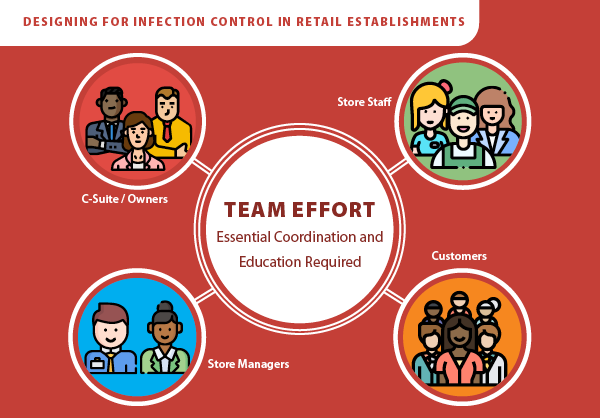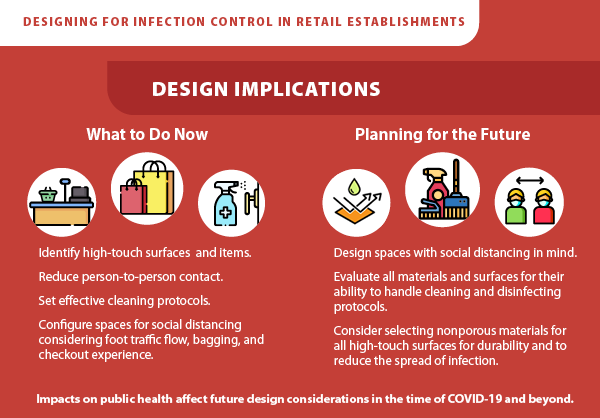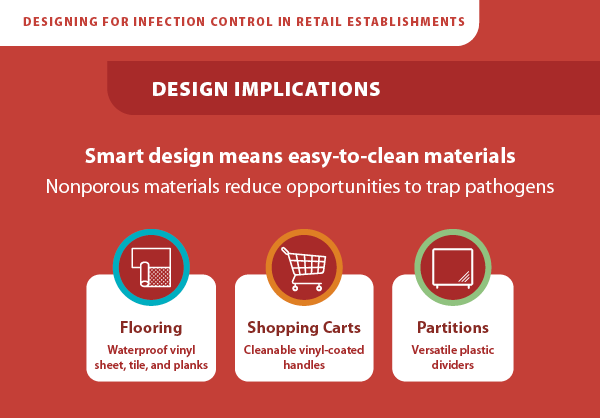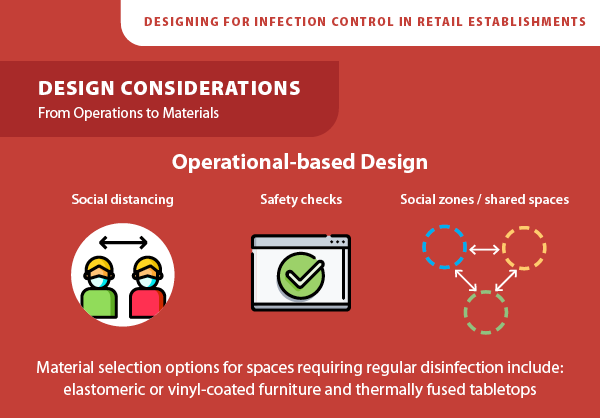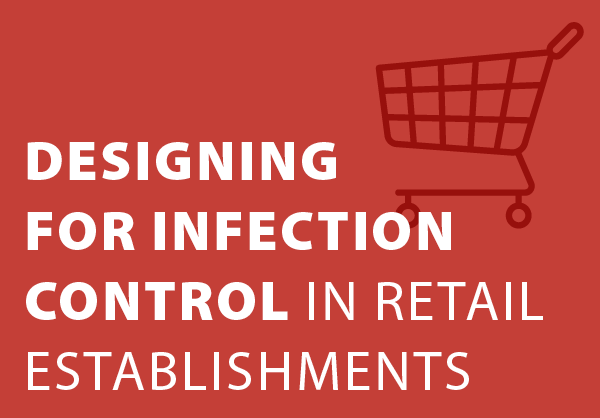
Designing for Infection Control in Retail Establishments
Retail establishments are discovering what health care settings have long understood: that infection control adds a layer of complexity to cleaning protocols. In the age of COVID-19, the U.S. Centers for Disease Control and Prevention (CDC) has essentially said that all public spaces must develop and implement a plan for cleaning and disinfecting. Here’s a primer on what this means—and the implications for design.
Click here for resources and social media graphics
you can download and share!
The Material Difference
Selecting the right materials can mean the difference between healthy spaces and premature product failures, unbudgeted costs, and negative health outcomes. That’s why applying a multi-attribute approach is critical—looking at performance characteristics, service life, environmental considerations, and health and safety. In other words: performance and sustainability go hand in hand.
With COVID-19 bringing new disinfection protocols to the retail sector, stores must also consider how easy or hard a product is to clean and the impact of various disinfectants on that product. Material selection plays a large role in infection control and disease prevention. Durable materials that are easy to clean and inhibit bacterial growth contribute to healthy and sustainable environments.
Collaborate with manufacturers and trade associations to understand the performance characteristics, the chemistry, and the manufacturer’s cleaning and disinfecting recommendations. Doing your homework upfront will save you unintended consequences down the road.
Know the Difference: Cleaning vs Sanitizing vs Disinfecting
- Cleaning removes dust and other microorganisms. It is accomplished with water, detergents, and mechanical action and is an essential first step before disinfection.
- Sanitizing is a form of germ control that reduces bacteria but not COVID-19 and other viruses.
- Disinfecting inactivates COVID-19 and other pathogens. It often involves chemicals, heat, or UV.
To determine what disinfectant is best to use for your purposes, consult the U.S. Environmental Protection Agency (EPA) recommended list of disinfectants.
Success Depends on a Team Effort
These individuals are essential to coordinate with and educate in the retail space.
- C-Suite / Owners
- Store Management
- Store Staff
- Customers
Design Implications: What to Do Now
From foot traffic flow to the bagging and checkout experience, designing for COVID-19 means:
- Identifying high-touch surfaces and items.
- Reducing person-to-person contact.
- Setting effective cleaning protocols.
- Configuring spaces for social distancing considering foot traffic flow, bagging, and checkout experience.
Design Implications: Planning for the Future
While our understanding of the novel Coronavirus and its impacts on public health and public spaces is evolving, there are steps that retail establishments can take today to apply a COVID-19 lens to future design. The impacts on public health affect future design considerations in the time of COVID-19 and beyond.
- Design spaces with social distancing in mind.
- Evaluate all materials and surfaces for their ability to handle your store’s cleaning and disinfecting protocols.
- Consider selecting nonporous materials for all high-touch surfaces for durability and to reduce the spread of infection.
Three Examples of Smart Design
- Flooring: Remove hard-to-clean carpet and replace with resilient products like waterproof vinyl sheet, tile and planks. Consider vinyl floor graphics for wayfinding.
- Shopping carts: Consider vinyl-coated shopping cart handles and metal carts and baskets that are easy to wipe down after every use.
- Partitions: Select plastic, acrylic, plexiglass, or vinyl partitions to protect cashiers and customers.
Design Considerations: From Operations to Materials
The way an industry operates will also influence how we design and maintain the spaces we occupy, and in turn, the materials we choose. There are three core operational considerations that retail businesses need to put in place—and that need to be factored into design:
- Social distancing to ensure customers and employees can maintain six feet of space from one another.
- Safety procedures including daily temperature evaluation, access to masks and additional necessary PPE, and enhanced cleaning and disinfection protocol.
- Social zones / shared spaces and how to ensure occupant safety in shared community spaces such as break areas, fittings rooms, checkout areas, etc.
Each of these brings with it design implications as well as decisions about materials selection. For example, elastomeric or vinyl-coated furniture and thermally fused countertops are a good option for checkout areas where customers and employees are in shared spaces that need to be disinfected regularly and easily.
Review a more detailed flowchart describing design implications based on operational implications by clicking here.
Material Standards to Consider
There are many various guidelines and standards to consider. We’ve compiled a quick reference guide of some that you may want to review first. Click here to download.

